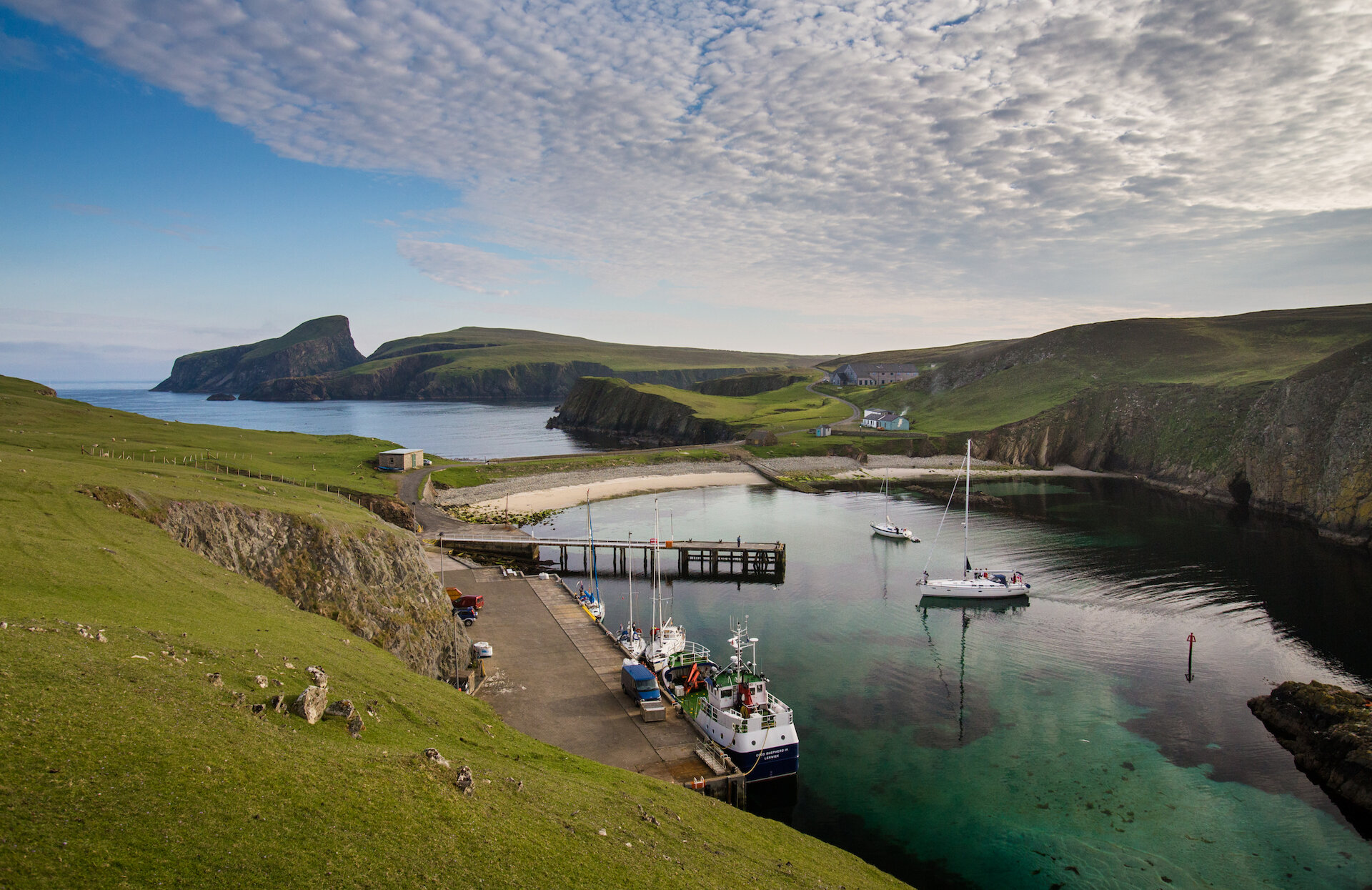A quick introduction
Fair Isle is the southernmost Shetland island and lies 24 miles from the Shetland Mainland and 27 miles from North Ronaldsay, the most northerly island in Orkney.
Norse settlers named it Fridarey – 'the island of peace' – but this stepping stone in the sea was also vital in times of strife, when the Earls of Orkney, and Viking warlords before them, used it as a look-out post and for sending fire signals to and from Shetland.
The island passed into the ownership of the National Trust of Scotland in 1954. Today, it is home to around 60 people. Fair Isle is a hotspot for ornithologists thanks to its importance as a breeding ground for seabirds and a stopping point for migrant species.
How to get to Fair Isle
You can travel by ferry or plane, and both must be pre-booked.
The ferry 'Good Shepherd IV' carries 12 passengers and takes 2.5 hours. It leaves from Grutness Pier at the southern tip of Shetland and once a fortnight (summer only) from Lerwick. Please note that this is not a car ferry. View the timetable on the Ferry Services website.
Most flights leave from Tingwall Airport, six miles west of Lerwick, and take around 25 minutes. The flights operate three times a week and, from April to October, there is also weekly service from Sumburgh (April - October). View the timetable on the Airtask website.
Yachts can tie up at the North Haven, with a small nightly charge for use of the harbour.
Where to stay
The main place to stay on Fair Isle is the Bird Observatory, which reopened in 2025 after being rebuilt following a devastating fire that destroyed the building in 2019. You can find a list of other accommodation providers on the Fair Isle website.



